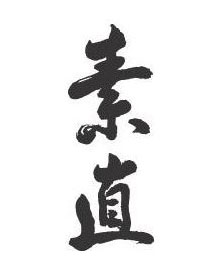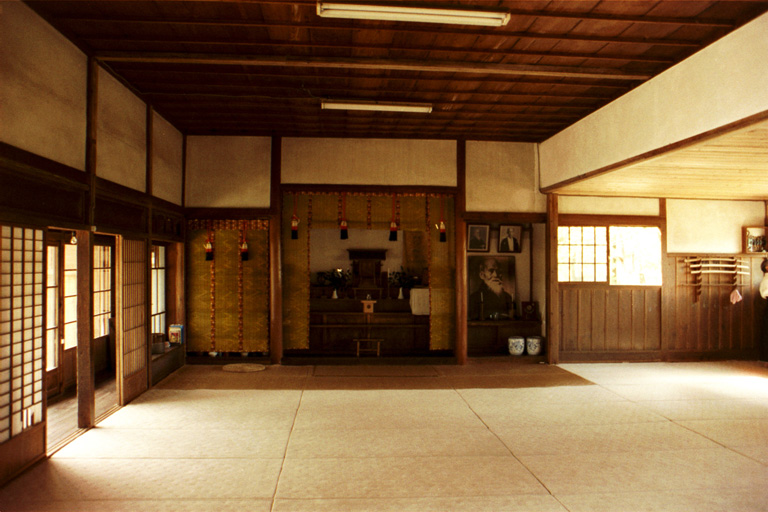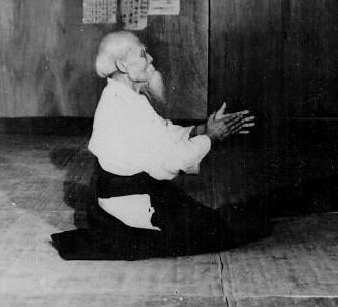Here is an interesting article written by Stanley Pranin (RIP) of Aikido Journal about honesty in training. It is important to get the balance correct between providing a realistic strong attack and allowing ones partner to perform a technique. Saito Sensei would advise to grip ones partner really strongly and if they are unable to move then to lighten the grip so that they can perform the technique. This is especially important when working with beginners, as a constant immovable grip will not allow the person to learn the technique and get stronger. It can also apply to having a forward knowledge of the technique that is to come, as Stanley Pranin discusses below:

“When I trained in Iwama under Morihiro Saito Sensei many years ago, every so often he would say something like, “Sunao ni keiko shite kudasai” (Practice with an honest mind) to admonish students to practice sincerely and in a spirit of cooperation. An example would be when he saw a student resisting another’s attempt to perform a technique using his foreknowledge of the technique being practiced.
“Let’s assume that we are practicing tai no henko. I know that nage will be pivoting to the outside while extending his arms in front of his centre. Instead of merely grabbing his hand firmly, I lift it up forcibly to prevent him from turning and executing the technique. What I have done is simply to take advantage of the prearranged nature of practice to thwart nage’s attempt to perform the technique. I am not being “sunao” or honest in my training. Such an action on my part would be entirely self-defeating and a show of disrespect to the teacher. If I were to lift uke’s arm upward in tai no henko, he could simply continue the upward movement and swing his arm towards my face to throw me down.
“The following was a true story that occurred at the Iwama Dojo many years ago. I was practicing with a strong partner. Every time, he would use his knowledge of the technique we were practicing to block my movement. This of course was a cause of frustration to me. To make a statement, I proceeded to block his technique in the same manner, but only once to prove a point. He continued every time to stop me, and from then on, I just resigned myself to continue until the end of class vowing to never train with him again.
“I knew that Saito Sensei was watching us as we continued in this manner, and I saw him becoming upset out of the corner of my eye. Finally, Sensei shouted, “Dame! So iu kudaranai keiko yamero!” (Stop that stupid training!). We all sat down while Sensei exploded at my partner. He explained that anyone can block a person’s technique if they know in advance what they intend to do. That this kind of training totally defeats the purpose of practice and that one cannot progress by training this way. Sensei then proceeded to ban my partner from practice at the dojo. The man was totally humiliated and immediately left the dojo with his head hanging down.
“Sensei eventually let the man back after about a month. From that point on, he trained in a respectful way and became an exemplary student. I trained with him several times after that and it was an enjoyable experience. He later established his own dojo and is still active.
“Let me give one more example drawn from aikido history. This one is a humorous story that shows another instance of someone not being “sunao.” It has to do with the famous Professor Kenzo Futaki who was a devoted student of Morihei Ueshiba during the Kobukan Dojo period in the 1930s. Futaki Sensei was known affectionately as “Dr. Brown Rice” for his strict macrobiotic diet.
One day Professor Futaki said to Ueshiba Sensei, “Sensei, I am going to attack you with a bokken. Can you escape from my attack?” Sensei answered smilingly, “Anytime.” When the professor used to attack Sensei from the front during demonstrations, Sensei always evaded to the left. So this time, he anticipated and decided to make an attack to the direction in which Sensei always evaded. As a result, Professor Futaki’s attack missed Sensei again, because Sensei did not move. The professor of course admitted his defeat.
When Professor Futaki asked Sensei how he could tell the direction of his attack, he responded, “Your mind had already flown to the right. Your empty-spirited body made that attack ever so slowly!”
(From “An Aikido Life — Chapter 8″ by Gozo Shioda)
“In this case too, the befuddled professor believed he could outwit Ueshiba Sensei because he thought the latter would move in a predictable way. However, the Founder was extremely astute and immediately sensed the ruse. Dr. Futaki was not being “sunao” when he attacked with his bokken.
“I will finish up with one other example of how the lack of an honest spirit in training led to the end of two promising aikido careers. On my first trip to Japan, there were two foreign men that often trained and hung out together. They were both ranked about 2nd dan at the time. They could often be seen practicing together after class and really mixing it up.
“Years later, I happened to ask a mutual friend what happened to these two men as I had not seen or heard about them for a long time. He said that both had stopped aikido altogether because of their frustration at not being able to make techniques work on each other. They did not practice aikido with an honest mind. To my way of thinking, they had totally misunderstood the importance of honest practice as the correct way to develop good aikido skills.
“I think it is important for teachers to grasp this often misunderstood point and regularly explain to students why their future progress hinges upon adopting an open, honest mind in training, what the Japanese call “sunao na kokoro.””




Comments